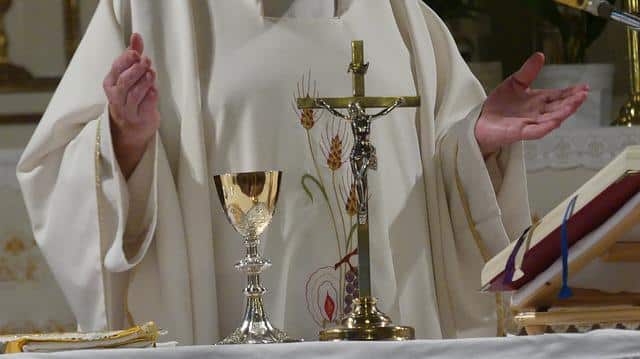
The liturgical year is the one that establishes the festivities of the Catholic Church.
Before entering fully into clarifying the meaning of the term liturgical year , it is essential to know the etymological origin of the two words that give it shape:
-Year comes from Latin, exactly from "annus", which has the same meaning as in Spanish.
-Liturgical, on the other hand, is a term of Greek origin. Specifically, it comes from "leitoyrgikos" which can be translated as "relating to religious ceremonies." It is the result of the sum of three clearly differentiated parts: the noun "leiton" (government house), the element "ergon" (work) and the suffix "-ico", which is used to indicate "relative to."
What is the liturgical year
A year is a temporary period that extends for twelve months. Generally the notion is associated with the calendar year, which begins on January 1 and ends on December 31 . However, there are different types of year according to how time is measured, which may even have less or more than twelve months (such as the school year ).
In the case of the liturgical year , it is the name given to the year that governs the festivities of the Christian Church , the beginning of which is found in the initial Sunday of Advent (that is, on the first Sunday of the liturgical time that precedes the celebration. of Christmas ; this time lasts four weeks).
The liturgical year, in this way, organizes the various liturgical times that are linked to acts of worship , which in turn derive from the Bible . The faithful, following the liturgical year, can know which prayers should be prayed at each moment and know what colors the celebrant of the rite will wear in the liturgy framework.

Christmas is a celebration with a fixed date in the liturgical year.
Its function
In addition to all the above, we cannot ignore that for Christians the liturgical year has two clear functions:
-On the one hand, a salvific mission, insofar as they receive during that period the grace of the intimate joy of salvation, that of Christian hope, courage and bravery, the conversion of the heart...
-On the other hand, it is established that this liturgical year has a catechetical objective. Yes, because, through it, the mysteries of Christ are learned: Christmas, Epiphany, Death, Resurrection... Thus, for example, at Christmas we commemorate the birth of Jesus Christ while at Easter we choose to do the same with the passion, death and resurrection of the same.
Although there are celebrations whose date remains fixed every year (such as Christmas , which is celebrated on December 25 ), others change (such as Easter ). The liturgical year has particular relevance in these cases, when the celebrations are mobile and it is necessary to keep in mind when they are celebrated each year.
Cycles of the liturgical year
It is important to know that the liturgical year has two cycles: the Christological season, which is the one that revolves around Christ, and the saints' calendar. The latter is the one dedicated to the saints and the Virgin.
If we focus on the Roman Catholic Apostolic Church , the liturgical year is made up of Ordinary Time , the Season of Advent , the Season of Christmas , the Season of Lent and the Season of Easter .
